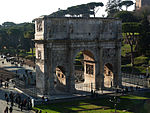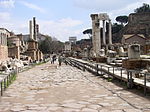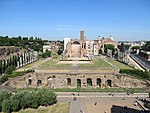Historic district of Rome
Commons category link is locally definedHistoric districtsHistoric sites in ItalyWorld Heritage Sites in Italy

The historic district of Rome was declared World Heritage Site by the United Nations Educational, Scientific and Cultural Organization in 1980. It covers 19,91 km² and is included in 22 rioni with 186.802 inhabitants. There are 25.000 importants archaeological sites and locations.The 22 rioni are Monti, Trevi, Colonna, Campo Marzio, Ponte, Parione, Regola, Sant'Eustachio, Pigna, Campitelli, Sant'Angelo, Ripa, Trastevere, Borgo, Esquilino, Ludovisi, Sallustiano, Castro Pretorio, Celio, Testaccio, San Saba and Prati.
Excerpt from the Wikipedia article Historic district of Rome (License: CC BY-SA 3.0, Authors, Images).Historic district of Rome
Piazza del Colosseo, Rome Municipio Roma I
Geographical coordinates (GPS) Address Phone number Website Nearby Places Show on map
Geographical coordinates (GPS)
| Latitude | Longitude |
|---|---|
| N 41.890222222222 ° | E 12.492305555556 ° |
Address
Colosseo (Anfiteatro Flavio)
Piazza del Colosseo
00184 Rome, Municipio Roma I
Lazio, Italy
Open on Google Maps











